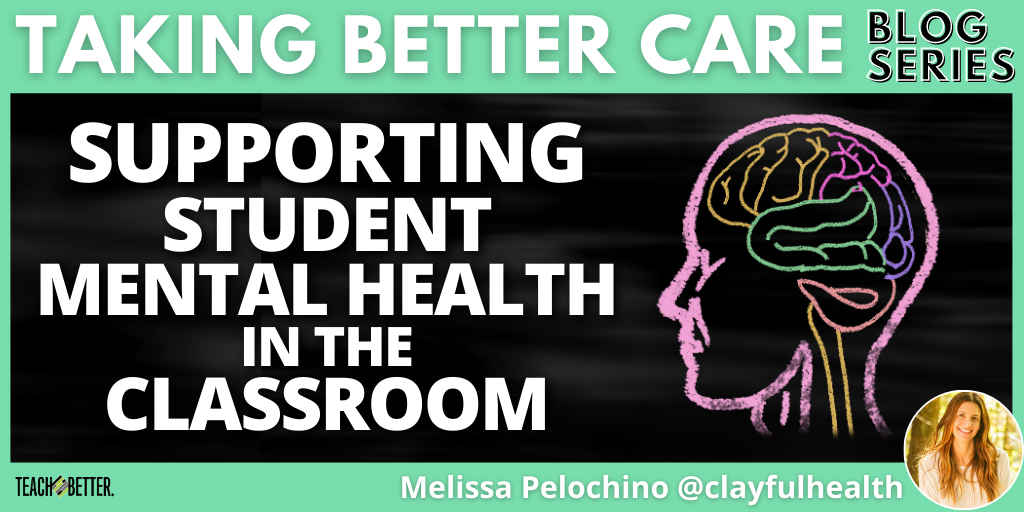TL;DR:
- Students everywhere are struggling with mental health.
- Their behaviors are often a result of a specific need.
- There are tools to help students reflect on what is in their control, identify their need and then ask for it.
Supporting Student Mental Health in the Classroom
The statistics are sobering. Month after month and week after week, organizations and agencies are releasing statistics about the state of mental health of children in this country.
Here are some recent articles that caught our attention:
- Teen girls are experiencing suicide at an alarming rate
- Mental health tops the list of worries for parents
- Why American teens are so sad
In many of these articles, the problem is clearly defined, but effective solutions are few and far between. It may be because:
- The needs are so big, it’s hard to know where to start.
- The demand for mental health providers is so much higher than the supply.
- Adults are still processing the impact of a 2+year pandemic on our own lives and are busy putting the oxygen masks on ourselves before applying them to others.
At Clayful, we work with schools to help students increase their mental wellness through coaching. We support thousands of students across the country through text-based coaching around preventative topics such as loneliness, peer conflicts, and self-esteem as well as more crisis-related topics such as substance use, grief, and self-harm.
This blog series is about sharing the resources that are making a difference.
If we think about each problem as representing a deeper human need, we can help the student see their problem in a new way and increase the number of ways they can meet their need. Click To TweetTool 1: Circle of Control
Some believe anger is simply a result of trying to control things that are out of our control.
Think about the last time you were angry about something. What was it about? Were you trying to control someone, something, or some situation that was out of your control?
Focusing on things we can’t control can lead to feelings of anger, sadness, frustration, and even rage.
Here are some common things students struggle to control but can’t:
- I want her to like me as much as I like her.
- I want them to stop talking behind my back.
- I want my mom to let me go to the dance.
- I want to play on the varsity team but I am stuck on the JV team.
In these situations, we can empower students by helping them accept the things they can’t control and focus on the things they can control.
Here’s how it works:
Show the students the Circle of Control tool and say the following:
- Look at this image. What are you trying to control in this situation?
- After they choose: How is that working for you?
- When we focus on things we can’t control, it can make us feel bad. When we focus on things we can control, it can help us feel better. Look at this image again. What can you control in this situation?
- After they choose: How might you control that?
- What should happen next?
Get the Circle of Control tool here.
Tool 2: Needs List
Students often come to chat about problems to solve. At face value, these problems may have one or two obvious solutions, many of which have been tried or don’t sound appealing to the student. Here is where students get stuck.
However, if we think about each problem as representing a deeper human need, we can help the student see their problem in a new way and increase the number of ways they can meet their need.
For example, if a student comes in and shares, “My brother keeps picking on me. He won’t stop no matter what I try,” the obvious solution to this problem might be to tell your brother how you feel and/or tell a trusted adult.
If we think about which needs this problem represents, we might help this student realize that what they really need is power, respect, love, or connection.
When we help students see their problems as unmet needs, students can think of many more ways to meet their needs, many of which will look different than the original two solutions mentioned in the problem above.
We can invite students to start thinking about their issues in terms of the needs they represent.
Here’s how it works:
Show the student the Needs List and say the following:
- It sounds like you have some unmet needs. Take a look at this image. What do you think you need most at this moment?
- What might change for you if you get this need met?
- How will you know if you get this need met?
- Can we work together to come up with some ways to meet this need?
- Which of these ideas would you like to try? When?
Get the Need List tool here.
Tool 3: Ask for What You Want
Having difficult conversations is hard for adults, let alone for adolescents. Students will frequently come onto our platform and realize that they need to have a difficult conversation with a friend, a teacher, or a family member.
In these cases, we will role-play these difficult conversations with the student to help them prepare.
We begin by asking them to describe the time and place in which they imagine this conversation taking place.
We then engage in a “positive” conversation where they are met with acceptance and a resolution followed by a “negative” conversation in which they are met with anger and disappointment and end with things left unresolved.
Students will often come back to practice these conversations again and again, each time trying new things out in the role-play. Sometimes students have the conversation in real life and sometimes they don’t. Either way, the strategies, skills, and confidence they build along the way are useful.
We invite students to use a tool to scaffold such conversations. It’s a four-part tool that helps students express their needs in a thoughtful and systematic way. We have adopted this particular tool from the nonviolent communication framework developed by Dr. Marshall B. Rosenberg, Ph.D.
[scroll down to keep reading]Here’s how it works:
Show the students the Ask for What You Want tool and say the following:
- It sounds like you want to have a difficult conversation.
- Take a look at this tool. It can help you have this conversation.
- Let’s check out each of these four steps and practice using them together.
Get the Ask for What You Want tool here.
If you want to bring Clayful to your school or learn more, click here.
About Melissa Pelochino
Melissa is the Co-Founder & Chief Experience Officer at Clayful. Clayful provides on-demand text-based coaching for kids. After 10+ years in Title 1 schools, Melissa became a Fellow at Stanford. She then led innovation & product at Seesaw & Nearpod.




